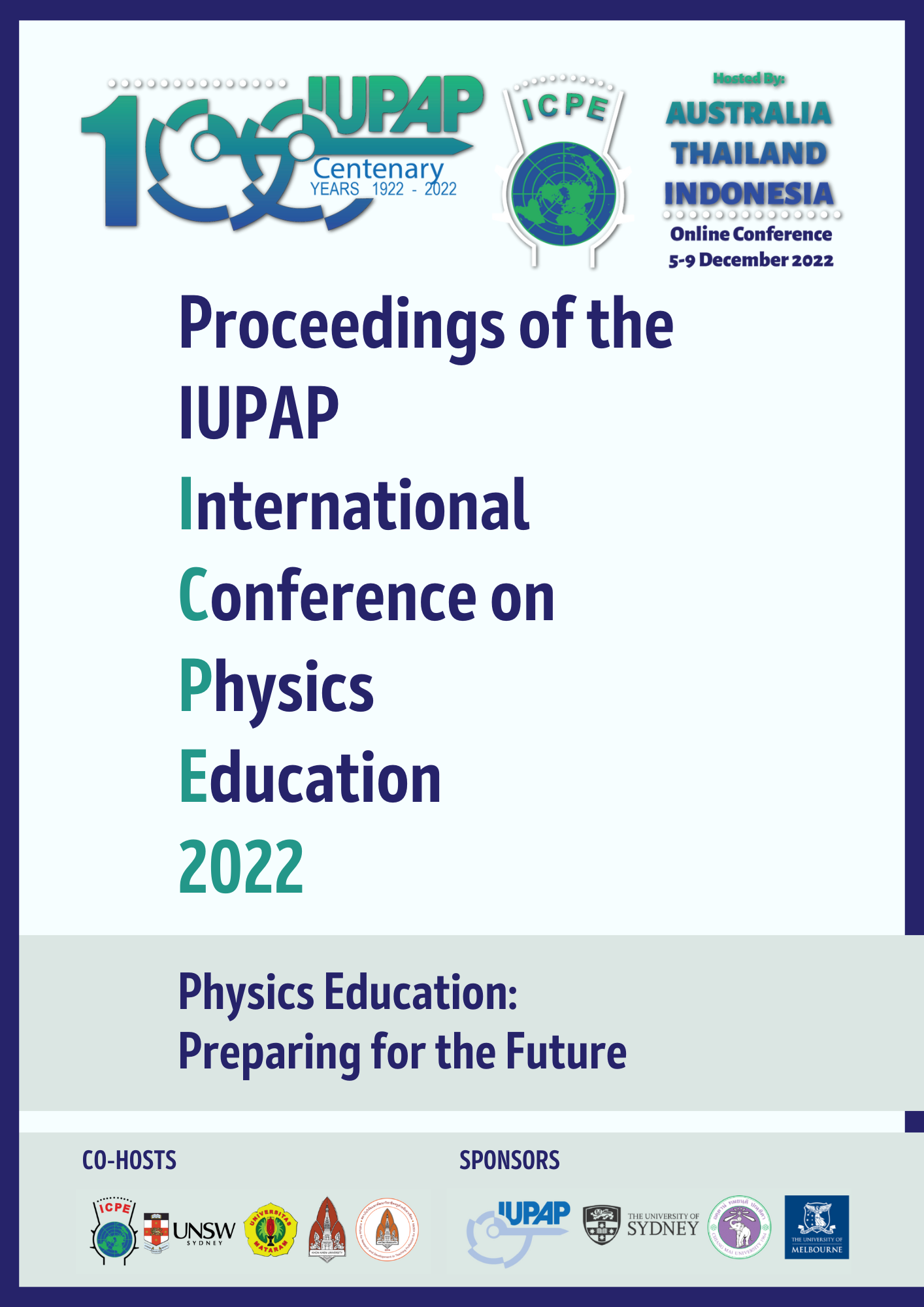Case study: Physics gifted students’ use of multiple representation in problem solving
Keywords:
Physics gifted students, Multiple representation, Problem solvingAbstract
Gagné (2010) defines the Differentiated Model of Giftedness and Talent (DMGT) as the process of transforming exceptional innate qualities (sometimes known as gifts) into exceptional knowledge and skills (called talents). Physics gifted students are students with outstanding capabilities resulting from being well-trained and having systematically developed their competencies in physics. These students will become high-skill workforces and central to developing responses to societal challenges (Makkonen, Lavonen, & Tirri, 2022). In this presentation, we report on a qualitative study aimed to investigate gifted physics students’ capabilities of using multiple representations during problem solving in mechanics. Multiple representations include words, diagrams, equations, graphs, and drawings. Previous physics education research (Chi et al., 1981) indicated that students who were able to use multiple representations often had better physics conceptual understanding. As gifted physics students, three students were chosen from the first camps of the Thailand Physics Olympiad (TPhO). Data were collected during a semi-structured interview. Each student was asked to solve a problem and then explain their thought processes and their choice of representations. Different, often multiple, representations were used depending on the physics topics related to the problem. The main representations selected were equations and diagrams, which relate to analytical thinking. This case study helps us understand how gifted students’ use, or lack of use, of representations relates to their abilities to solve problems. These results are helpful for improving physics teaching. The findings can be used by physics teachers to identify which representations in physics, gifted students need help on. The teachers can then design effective teaching materials to best support the talent development of gifted physics students.
REFERENCESChi, M. T., Feltovich, P. J., & Glaser, R. (1981). Categorization and representation of physics problems by experts and novices. Cognitive Science, 5(2), 121-152.
Gagné, F. (2010). Motivation within the DMGT 2.0 framework. High Ability Studies, 21(2), 81-99.
Kohl, P. B., & Finkelstein, N. D. (2008). Patterns of multiple representation use by experts and novices during physics problem solving. Physical Review Special Topics-Physics Education Research, 4(1), 010111.
Makkonen, T., Lavonen, J., & Tirri, K. (2022). Factors that help or hinder the development of talent in physics: A qualitative study of gifted Finnish upper secondary school students. Journal of Advanced Academics, 33(4), 507-539.
Downloads
Published
Issue
Section
License
Authors who publish with the Proceedings of the International Conference on Physics Education 2022 agree to the following terms:
a) Authors retain copyright and grant the journal right of first publication with the work simultaneously licensed under a Creative Commons Attribution License (https://creativecommons.org/licenses/by/4.0/) that allows others to share the work with an acknowledgement of the work's authorship and initial publication in this journal.
b) Authors are able to enter into separate, additional contractual arrangements for the non-exclusive distribution of the journal's published version of the work (e.g., post it to an institutional repository or publish it in a book), with an acknowledgement of its initial publication in this journal.
c) Authors are permitted and encouraged to post their work online (e.g., in institutional repositories or on their website) prior to and during the submission process, as it can lead to productive exchanges, as well as earlier and greater citation of published work (See The Effect of Open Access - http://opcit.eprints.org/oacitation-biblio.html).
Privacy Statement The names and email addresses entered in the Proceedings of the International Conference on Physics Education 2022 site will be used exclusively for the stated purposes of this journal and will not be made available for any other purpose or to any other party.
